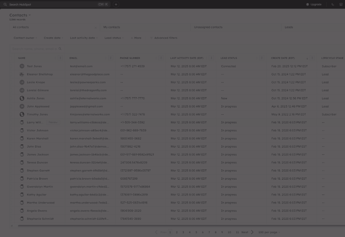You know the saying - a picture is worth a thousand words. More than that, adding images to your content can increase view count by over 94%. No one wants to see a wall of text with no visual breaks. Photos help make content more appealing and digestible.
However, there is an art to choosing the perfect photo. It's not just about throwing in a random picture; it takes thought and consideration. This blog post will cover the key factors to consider when selecting an image that enhances your content and resonates with your readers.
5 Things to Consider When Selecting the Perfect Blog Post Image
So, you have the perfect blog post. It brings forth groundbreaking ideas and is written in a captivating way, and now all that's left is to add a photo that will do it justice.
When choosing the ideal image to complement your content, several factors come into play. Considering these five elements, you can select an impactful blog post image that engages your audience.
1. Quality
The first one is a no-brainer. You want to use high-quality photos that are clear, sharp, and look good. If a picture is blurry or pixelated, people might not even bother looking at it.
Worse yet, low-quality images reflect poorly on your brand. Readers may question your
legitimacy if the accompanying blog post visuals seem unprofessional. Test images at different sizes to ensure quality remains high across devices. A photo that looks beautiful full-screen may become grainy and distorted on mobile.
If you're unsure where to find high-quality brand imagery, try using stock photography websites. They have plenty of great images of picture selection.
2. Image Relevance
Can you spot the problem with this scenario? A blog post about veganism features a photo of an airplane soaring through a blue sky. Seems a bit out of place, doesn't it? Images should directly relate to the topic at hand. Shots of leafy greens or veggie bowls would be more fitting for a vegan post.
Relevant images do more than just look nice. They help strengthen your message and keep your readers interested. You want your pictures to add something to your content, not just be there for decoration.
There are two types of blog post photos to avoid:
Irrelevant or Out of Context Photos
These can confuse readers or distract them from your main point. For example, a picture of a cat might not be the best choice if you're writing about gardening. Even if there are plants in the background, if the cat is the main thing in the photo, it's not really relevant.
It's also important to consider cultural and social sensitivities when picking images. Going back to veganism, for instance, you probably want to avoid pictures of meat products. If you do use a picture of a juicy burger, make sure it's clear that it's a plant-based burger, not a beef one. One way to make sure your images make sense is to add captions (AKA context.)
Non Complimentary Images
Another thing to consider is how the image advances the content forward. Sometimes, you might find a great picture that doesn't add enough value to your content. But don't worry! There are ways to make it work. You could change your heading to fit the image better. Or you could add a caption that explains why the image is there.
If you're still having trouble finding the right images, don't forget that we have another post that talks about the best stock photo websites.
3. Brand Consistency
Research shows brand consistency can increase revenue by 10-20%. Blog photos need to align with existing branding. Over time, audiences come to expect a specific aesthetic. Drastically deviating from this risks confusing loyal followers.
For example, imagine a law firm mainly using traditional stock photos of men and women in suits. One day, they feature a cartoon lawyer running away with money bags for eyes. It would seem out of place, given their typically serious tone.
Carefully chosen images that match brand style guidelines reinforce what a company stands for.
4. Emotional Appeal
While well-written content can be powerful, text alone doesn't always captivate feelings. Images carry moods and elicit reactions that words cannot. Consider which emotions you want readers to experience. Then, select pictures that align with the intended sentiment, whether it be joy, inspiration, curiosity, or empathy.
For instance, an article on overcoming adversity could feature a photo of a runner crossing the finish line, sweat on her brow, but triumph in her smile. Or a post on climate change may show a lonely polar bear on a melting chunk of ice, eliciting sadness and urgency.
5. Accessibility
With visual content, it's essential to consider those with disabilities. Many conditions, like poor vision, color blindness, and dyslexia, can affect how images are perceived. Here are a few tips:
- Avoid photos that rely heavily on text to convey meaning
- Use high-contrast colors for clarity
- Provide alt text descriptions for screen reader compatibility.
- Avoid using too many small images or cluttered layouts.
Inclusion and Representation
When we talk about accessibility, we should also think about inclusion and diversity. If your photos include human beings, try to show a mix of different ethnicities, genders, ages, and abilities.
If readers never see people who look like them in your photos, they might think your content (or even your whole brand) isn't for them. For example, a construction company looking for workers but only showing men in photos might miss out on women who could be great at the job.
Know Where Your Image Is Going
You've got the perfect photo. Now, where should it go? The next step is to make sure you put it in the right place. The placement of an image can change how people understand it. It's crucial to think about this if you're trying to get a specific message across.
A Full-Width Header Image
The header is usually the first thing people see when they visit your page. So, images here will catch people's eyes more than anywhere else.
Header images can set the tone for your whole piece of content. Plus, you usually have more space to work with here, so you can use bigger images. For example, bright and colorful header images might make your content feel exciting or energetic. A quieter, calmer image could make it feel more serious.
A Background Image Behind Text or Graphics
This one can be tricky. Large, detailed background visuals can sometimes distract from your main content. But if you use them right, they can make your page look more interesting or help get your message across.
For instance, a subtle pattern in the background can add some texture to your page without taking attention away from the main content.
smaller Images within Blog Posts
Aligning images along the right side keeps them from interrupting textual flow. This popular format complements writing without much disruption. Yet side images can feel disconnected from body content. Some readers may gloss over them entirely.
For others, though, it creates a nice flow as their eyes move from left to right while reading. Right-aligned images are usually smaller than header images or full-width images in your post.
Full-Width Images Within Blog Posts
Full-width images make a statement by spanning the entire readable width. It's hard to miss them!
These images can help break up long chunks of text and make the page more interesting to look at. They also tend to feel more connected to the content compared to right-aligned images.
But be careful not to overdo it. If you put a full-width image after every paragraph, it can be distracting and take attention away from your writing. It can also make scrolling through your page much longer, which might scare some readers away.
Key Takeaways
The balancing act that is choosing the perfect blog photo requires a mix of elements. Understanding these factors, along with image placement empowers you to make strategic choices.
With practice, you'll develop an eye for images that engage readers while supporting your content's core purpose.



